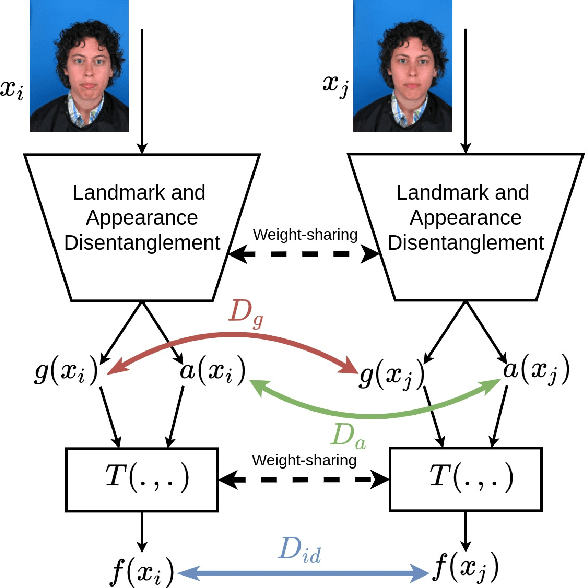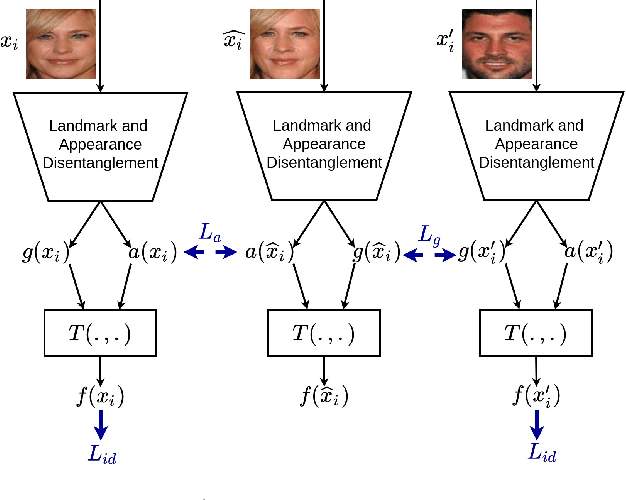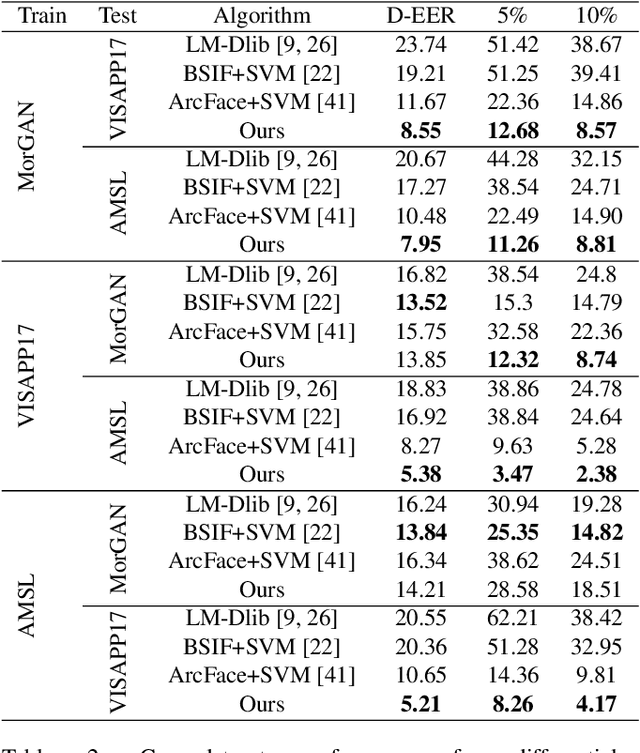Mutual Information Maximization on Disentangled Representations for Differential Morph Detection
Paper and Code
Dec 02, 2020



In this paper, we present a novel differential morph detection framework, utilizing landmark and appearance disentanglement. In our framework, the face image is represented in the embedding domain using two disentangled but complementary representations. The network is trained by triplets of face images, in which the intermediate image inherits the landmarks from one image and the appearance from the other image. This initially trained network is further trained for each dataset using contrastive representations. We demonstrate that, by employing appearance and landmark disentanglement, the proposed framework can provide state-of-the-art differential morph detection performance. This functionality is achieved by the using distances in landmark, appearance, and ID domains. The performance of the proposed framework is evaluated using three morph datasets generated with different methodologies.
 Add to Chrome
Add to Chrome Add to Firefox
Add to Firefox Add to Edge
Add to Edge